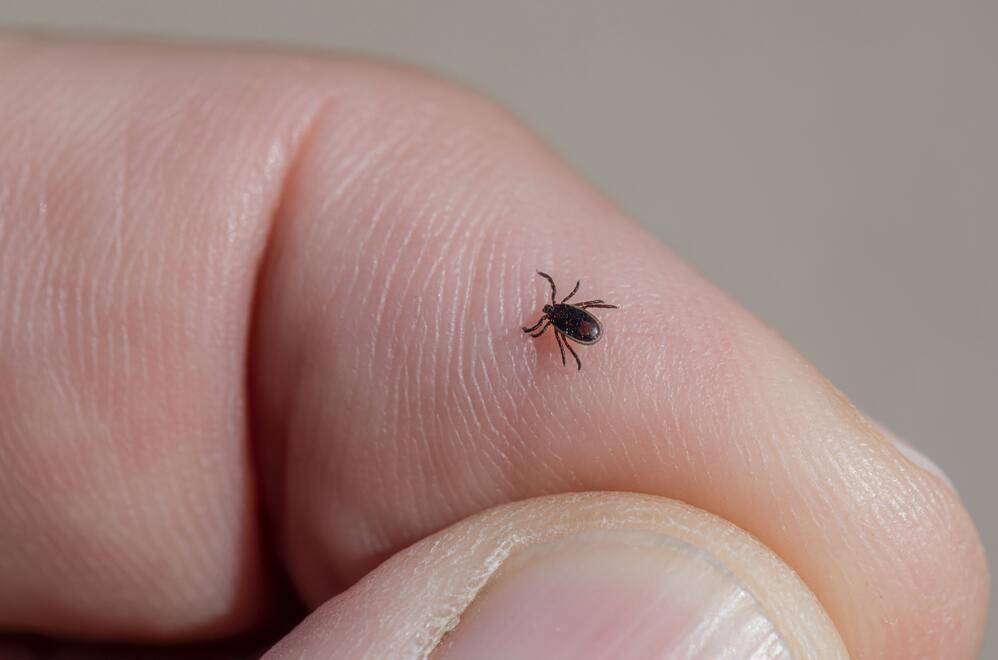If you have itchy bites and are concerned that you may have bugs, you must first determine what kind of bites you have. Ticks and bed bugs both have the ability to make people feel disgusted, which is something they both do. Your skin crawls just thinking about either of these heinous vermin.
Differences In Appearance
Hard ticks are what people usually mean when they compare ticks to bed bugs. These blood-sucking vermin can appear startlingly similar at first glance, and you hardly ever see them side by side. But there are some significant differences between the appearance of ticks and bed bugs.
Size
Ticks and bed bugs appear to be about the same size as the unaided eye when they haven’t eaten. Consider seeds as a general rule. Depending on the species, ticks can range in size from that of a sesame seed to smaller. Contrarily, bed bugs are typically the size of an apple seed. An apple seed measures about 8 millimeters in length compared to a sesame seed’s 3 to 4 millimeters.
Color
After feeding, bed bugs change color from reddish-brown to a deeper shade of red. All bed bug species in the nation are the same color. Ticks have a wider range of colors than bed bugs do. Despite being typically dark brown or reddish-brown like bed bugs, they may also have tan stripes, a white spot, or darker legs and a lighter body, depending on the species.
Shape
Bed bugs and ticks have flat, oval, or seed-shaped bodies and lack wings. Compared to bed bugs, ticks have slightly narrower bodies, so there is less of a difference between the width of their top and bottom halves. After eating, both kinds of pests swell up.
Number Of Legs
Bed bugs and ticks come from different classes and have various numbers of legs. Ticks are arachnids, like spiders, and have eight legs. Bed bugs are insects with six legs. This is a definite giveaway if you know to look for it.
Differences In Feeding Habits
Ticks and bed bugs are both parasitic insects that feed by sucking blood. Their eating habits, however, are very different, from the specials they order to the way they consume it and the time they prefer to eat.
Host
However, if there are no animals nearby, ticks will bite humans. Ticks typically prefer to feed on animals. Contrarily, bed bugs prefer to feed on people and will only attack your pets if other bed bugs have driven them away from a freshly consumed human.
Bites
When obtaining their meal, ticks bury their heads into their victim, latching on until they have had enough. Ticks will remain attached to their host for about a day if they are not disturbed. By scratching, bed bugs will sit on your skin’s surface and reveal a small area. Then, they’ll never bury their heads as they drink through a protrusion that resembles a straw.

Time Of Day
Bed bugs will bite a person who is dozing off, feed on them for a while, and then leave. Over the course of the night, they might experience multiple bites from the same bed bug. Ticks aren’t as straightforward as they seem. Hard ticks can feed during the daytime, whereas soft ticks can only feed at night. Soft ticks are nocturnal. The simplest way to determine whether you were bitten by a bed bug or a tick is to ask yourself whether it happened at night or after you were outside.
Differences In Habitat
Although a bed is their preferred habitat, bed bugs can also live in furniture such as cushions on couches. Bed bugs prefer to be close to their hosts, so you can count on them to be indoors at all times.
Ticks, on the other hand, reside outdoors in grassy, wooded areas. They do not infest buildings like bed bugs and will wait for an animal to pass by in the wild.
Differences In Lifestyle
Ticks are solitary creatures, in contrast to bed bugs, which can quickly invade your bedroom in clusters of thousands. After receiving numerous bites, you won’t find ticks if you discover numerous bugs crawling around your house.
Differences In Disease
The extent of the harm that ticks and bed bugs are capable of causing is a key distinction. Nobody wants to have any kind of parasite feed on them, but ticks can have serious consequences. It is well known that ticks can transmit illnesses like Lyme disease. Bed bugs are not known to spread any diseases.
How To Prevent Bed Bug Or Tick
Being bitten by bed bugs and ticks can be avoided in a number of ways. Especially with ticks, it’s better to be safe than sorry.
Keep no piles of wood in your yard where ticks can hide if you don’t want them. In keeping with that tactic, mow frequently to prevent them from hiding in the grass. When hiking, you can take safety measures like wearing protective clothing and being careful not to veer off the path into wooded or grassy areas.
When it comes to bed bugs, be sure to avoid bringing in mattresses or furniture from the street, and if at all possible, avoid buying furniture from consignment stores. When you return from a trip, you should check and even vacuum your suitcases. You can buy a mattress encasement for long-term security.
How To Treat Bed Bug Or Tick Infestations
At the first indication of a tick or bed bug issue, homeowners should take action. DIY control may reduce the number of these pests, but professional pest control is often required to end an infestation. Call your Orkin Pro to help prevent and control ticks and bed bugs in your home.





